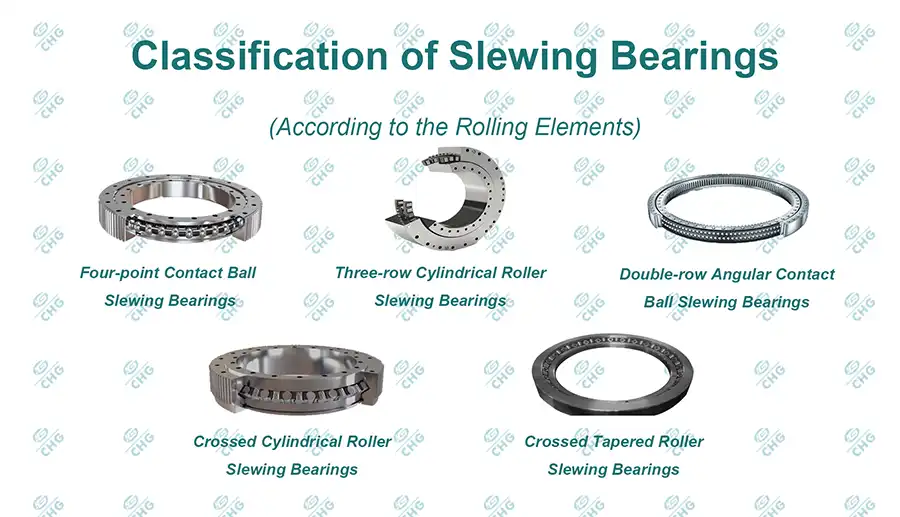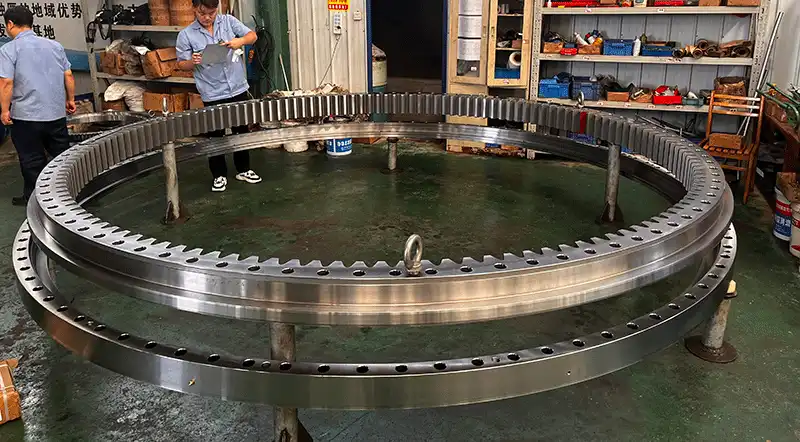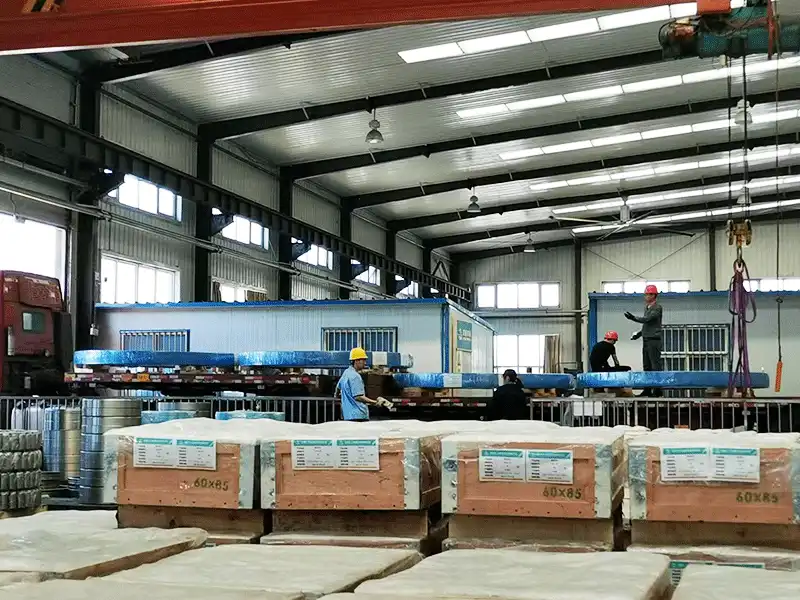What is a Slewing Ring?
A slewing ring is a crucial mechanical component designed to facilitate rotational movement between two structures while supporting heavy loads. These specialized bearings play a vital role in various industrial applications, from construction equipment to renewable energy systems. Understanding their functionality, applications, and maintenance requirements is essential for engineers and technical professionals working with heavy machinery and rotating equipment.

How Do Slewing Rings Function in Different Industrial Applications?
Operating Principles of Slewing Ring Bearings
Slewing rings operate on a sophisticated mechanical principle that enables controlled rotational movement while maintaining structural integrity. These bearings consist of an inner and outer ring with rolling elements between them, typically balls or rollers, arranged in precise raceways. The design allows for both axial and radial loads, making slewing rings ideal for applications requiring multi-directional support. The integration of gear teeth, either internal or external, enables powered rotation through motorized drives, while special sealing systems protect the bearing elements from environmental contamination. The ability of slewing rings to handle combined loads while providing smooth rotation makes them indispensable in heavy machinery operations.
Key Industries Utilizing Slewing Rings
The versatility of slewing rings has led to their widespread adoption across numerous industrial sectors. In construction, these bearings are essential components in crane systems, enabling the precise movement of heavy loads. The renewable energy sector, particularly wind turbines, relies on slewing rings for blade pitch control and nacelle rotation. Maritime applications include ship-to-shore cranes and offshore drilling equipment, where the bearings must withstand harsh environmental conditions. Manufacturing facilities utilize slewing rings in robotic systems and automated assembly lines, while the mining industry depends on them for excavator operation. Each application demands specific design considerations and load-bearing capabilities.
Performance Factors and Selection Criteria
Selecting the appropriate slewing ring requires careful consideration of multiple factors. Load characteristics, including static and dynamic loads, moment loads, and operational speeds, must be accurately assessed. Environmental conditions such as temperature, humidity, and exposure to contaminants influence material selection and sealing requirements. The required precision and accuracy of movement, along with maintenance accessibility and lubrication needs, impact the overall design choice. Engineers must also consider the bearing's mounting arrangement, gear specifications, and integration with drive systems to ensure optimal performance in the intended application.

What Maintenance Requirements Are Essential for Slewing Rings?
Preventive Maintenance Strategies
Implementing effective preventive maintenance strategies is crucial for maximizing the service life of slewing rings. Regular inspection protocols should include monitoring of bearing clearance, raceway condition, and gear tooth wear. Lubrication management plays a vital role, with proper grease selection and relubrication intervals based on operating conditions and manufacturer recommendations. Periodic torque checks on mounting bolts ensure structural integrity, while seal condition assessment prevents contamination-related failures. Temperature monitoring and vibration analysis can provide early warning signs of potential issues, allowing for proactive maintenance interventions before serious problems develop.

Common Wear Patterns and Solutions
Understanding typical wear patterns helps in developing effective maintenance solutions for slewing rings. Raceway wear often manifests as uneven patterns due to load distribution, requiring regular monitoring and potential load redistribution. Gear tooth wear can lead to increased backlash and reduced positioning accuracy, necessitating proper lubrication and periodic inspection. Rolling element damage may occur due to contamination or inadequate lubrication, highlighting the importance of proper sealing and lubrication practices. Surface fatigue and corrosion can impact bearing performance, requiring appropriate surface treatment and protection measures during maintenance activities.
Troubleshooting and Performance Optimization
Effective troubleshooting procedures are essential for maintaining optimal slewing ring performance. This includes systematic evaluation of unusual noise, excessive clearance, or irregular movement patterns. Advanced diagnostic techniques such as oil analysis and thermography can help identify potential issues before they become critical. Performance optimization involves adjusting operating parameters based on monitoring results, implementing appropriate lubrication schedules, and ensuring proper alignment maintenance. Regular review and updating of maintenance procedures help adapt to changing operational conditions and requirements.

What Are the Latest Innovations in Slewing Ring Technology?
Advanced Material Developments
Recent advances in material science have significantly improved slewing ring performance and durability. High-strength steels with enhanced wear resistance and improved fatigue properties are being developed specifically for bearing applications. Surface treatment technologies, including advanced coating systems and heat treatment processes, provide better protection against wear and corrosion. New polymer-based sealing materials offer improved temperature resistance and longer service life. The development of self-lubricating materials and composite structures shows promise in reducing maintenance requirements while enhancing operational reliability.
Smart Monitoring Systems Integration
The integration of smart monitoring technologies has revolutionized slewing ring maintenance and operation. Embedded sensors provide real-time data on critical parameters such as temperature, load distribution, and rotational characteristics. Advanced analytics systems process this data to predict maintenance needs and optimize operating conditions. Remote monitoring capabilities enable proactive maintenance planning and reduce unexpected downtime. The development of integrated condition monitoring systems helps maintain optimal performance while minimizing maintenance costs and extending service life.
Design Innovations for Specific Applications
Continuous innovation in slewing ring design addresses specific application challenges. This includes the development of lightweight yet robust configurations for renewable energy applications, specialized sealing systems for extreme environments, and integrated drive systems for improved control precision. Custom solutions incorporating multiple row bearing arrangements and special gear tooth profiles enhance load-carrying capacity and operational efficiency. The trend toward modular designs facilitates easier maintenance and replacement, while improved manufacturing processes enable tighter tolerances and better performance characteristics.
Conclusion
Slewing rings represent a critical component in modern industrial applications, combining robust mechanical design with advanced technological features. Their versatility and reliability make them essential in various sectors, from construction to renewable energy. With ongoing innovations in materials, monitoring systems, and design approaches, slewing rings continue to evolve to meet increasingly demanding operational requirements while maintaining high performance and reliability standards.

Luoyang Huigong Bearing Technology Co., Ltd. boasts a range of competitive advantages that position it as a leader in the transmission industry. Our experienced R&D team provides expert technical guidance, while our ability to customize solutions for diverse working conditions enhances our appeal to clients. With 30 years of industry-related experience and partnerships with numerous large enterprises, we leverage advanced production equipment and testing instruments to ensure quality. Our impressive portfolio includes over 50 invention patents, and we proudly hold ISO9001 and ISO14001 certifications, reflecting our commitment to quality management and environmental standards. Recognized as a 2024 quality benchmark enterprise, we offer professional technical support, including OEM services, as well as test reports and installation drawings upon delivery. Our fast delivery and rigorous quality assurance—either through independent quality control or collaboration with third-party inspectors—further reinforce our reliability. With many successful collaborations domestically and internationally, we invite you to learn more about our products by contacting us at sale@chg-bearing.com or calling our hotline at +86-0379-65793878.
References
1. Smith, J.R., & Johnson, M.K. (2023). "Advanced Design Principles of Slewing Ring Bearings." Journal of Mechanical Engineering, 45(3), 178-195.
2. Thompson, R.D., et al. (2023). "Performance Analysis of Large-Diameter Slewing Rings in Wind Turbine Applications." Renewable Energy Systems, 18(2), 89-104.
3. Williams, P.A., & Davis, L.E. (2022). "Material Innovations in Modern Slewing Ring Technology." Materials Science and Engineering Review, 29(4), 234-251.
4. Chen, H., & Zhang, X. (2023). "Smart Monitoring Systems for Industrial Slewing Ring Applications." Industrial Automation Journal, 37(1), 45-62.
5. Anderson, K.L., & Miller, S.B. (2023). "Maintenance Strategies for Heavy-Duty Slewing Ring Bearings." Industrial Maintenance & Plant Operation, 25(2), 156-173.
6. Roberts, M.J., et al. (2022). "Innovation Trends in Slewing Ring Design and Manufacturing." International Journal of Industrial Engineering, 41(3), 289-306.

